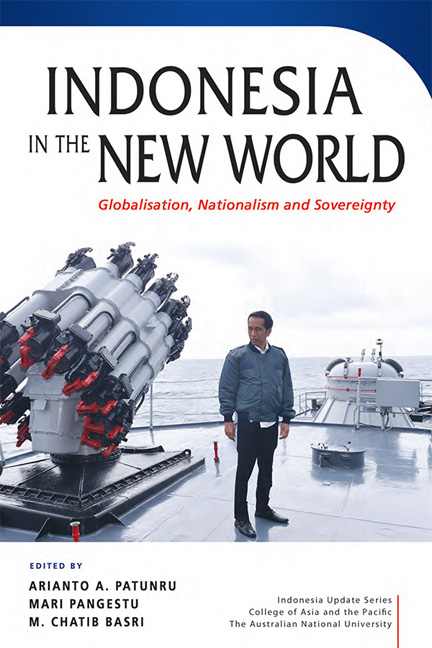Book contents
- Frontmatter
- Contents
- Tables
- Figures
- Contributor
- Acknowledgments
- Glossary
- 1 Challenges for Indonesia in the new world
- PART 1 Globalisation, Nationalism and Sovereignty: the Indonesian Experience
- PART 2 Nationalism in Practice
- PART 3 Impact of and Response to Globalisation
- 8 Anti-globalisation, poverty and inequality in Indonesia
- 9 Gender, labour markets and trade liberalisation in Indonesia
- 10 The good, the bad and the promise of globalisation: a private sector perspective
- PART 4 The Human Face of Globalisation
- PART 5 Navigating The New Globalisation
- Index
- INDONESIA UPDATE SERIES
9 - Gender, labour markets and trade liberalisation in Indonesia
from PART 3 - Impact of and Response to Globalisation
Published online by Cambridge University Press: 08 June 2019
- Frontmatter
- Contents
- Tables
- Figures
- Contributor
- Acknowledgments
- Glossary
- 1 Challenges for Indonesia in the new world
- PART 1 Globalisation, Nationalism and Sovereignty: the Indonesian Experience
- PART 2 Nationalism in Practice
- PART 3 Impact of and Response to Globalisation
- 8 Anti-globalisation, poverty and inequality in Indonesia
- 9 Gender, labour markets and trade liberalisation in Indonesia
- 10 The good, the bad and the promise of globalisation: a private sector perspective
- PART 4 The Human Face of Globalisation
- PART 5 Navigating The New Globalisation
- Index
- INDONESIA UPDATE SERIES
Summary
A growing body of literature has assessed the distributional effects of glo¬balisation, focusing mainly on inequality by skill level or socio-economic characteristics. Much less is known about the differential effects for men and women, although theory suggests several channels through which trade may affect the employment of men versus women. Globally, gender gaps in labour market outcomes remain large, notwithstanding the fact that differences between men and women in labour force participation and earnings are declining in many countries. Indonesia is one of the countries with relatively low female labour force participation, and a persistently large gender gap in participation. To understand whether and how trade policy and trade performance have played a role in this gender gap, this chapter focuses on the gender-specific effects of trade liberalisation in the 1990s and the relationships between trade and female employment in the period 2000–10.
In the next section, we first consider trade theory, and the mechanisms through which trade reform can induce gendered labour market effects. These channels include labour market discrimination, skill-biased techno¬logical change, sectoral segregation and the sectoral structure of employ¬ment. We then discuss the international empirical evidence for gendered trade effects. In the second section, we discuss the effects of Indonesia's trade reforms in the 1990s. The evidence suggests that import tariff reduc¬tions improved the competitiveness of Indonesian firms by reducing the costs of intermediate inputs. This, in turn, induced job creation and increased female—but not male—work participation. In the third section, we describe the more recent trends in female labour force participation, and in the fourth we relate those trends to Indonesia's trade performance in the period 2000–10. While the 1990s were a period of stagnation in aggregate female labour force participation, in the post-decentralisation period Indonesia experienced an increase in female participation, mainly in the service and trade sectors. But at the same time, the role of international trade in improving employment opportunities for women seems to have declined between 2000 and 2010.
- Type
- Chapter
- Information
- Indonesia in the New WorldGlobalisation, Nationalism and Sovereignty, pp. 157 - 179Publisher: ISEAS–Yusof Ishak InstitutePrint publication year: 2018



